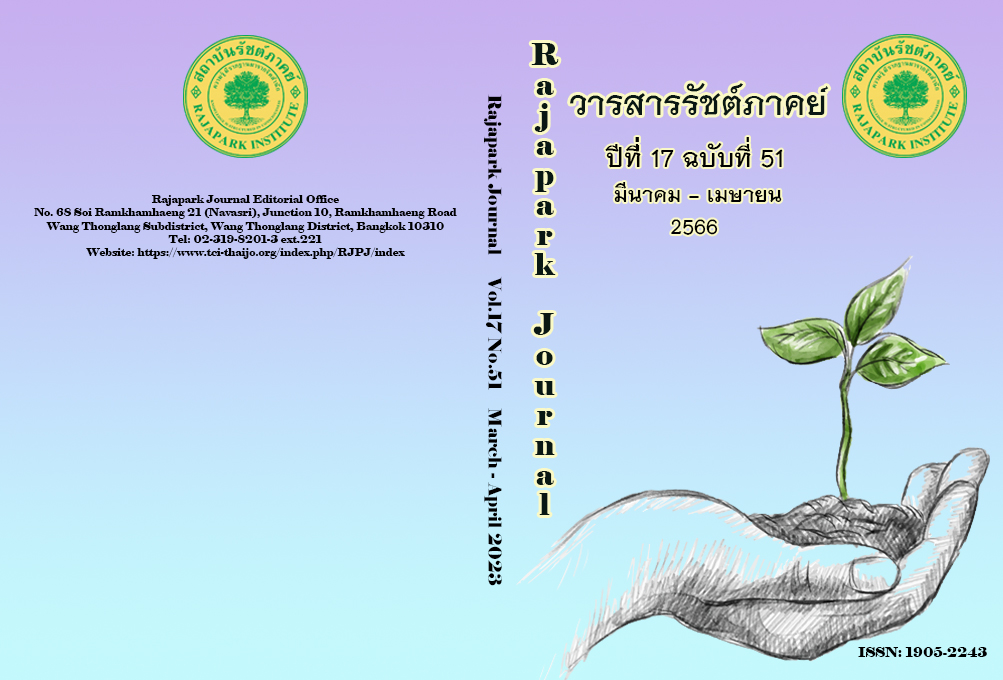A Comparison of Level of Thai Tourists’ Decision Making on Choosing Pool Villa in the Thailand Riviera
Main Article Content
Abstract
The objectives of this study were to 1) study the level of Thai tourists’ decision making on choosing a pool villa in the Thailand Riviera and 2) compare Thai tourists’ decision making on choosing a pool villa in the Thailand Riviera classified by personal information. This was quantitative research. The sample consisted of 388 Thai tourists choosing Pool Villa on the Thailand Riviera. Statistics used included mean, standard deviation, t-test, and one-way ANOVA. Research findings were: 1) In overall terms, Thai tourists’ decision making on choosing a pool villa on the Thailand Riviera is at a high level. When it comes to an individual component, evaluation of alternatives comes first, followed by post-purchase behavior, purchase decision, information search, and problem recognition, respectively; and 2) Thai tourists who have different personal information, that is, gender, age, education level, average monthly revenue, and occupation, have different decision making on choosing Pool Villa in the Thailand Riviera at the 0.05 level of statistical significance.
Article Details

This work is licensed under a Creative Commons Attribution-NonCommercial-NoDerivatives 4.0 International License.
Views and opinions appearing in the Journal it is the responsibility of the author of the article, and does not constitute the view and responsibility of the editorial team.
References
Boonkijpitipat, O. (2019). Consideation of Choosing Resort Accommodations in Pakchong District of Thai Tourists. https://mmm.ru.ac.th/MMM/IS/twin-8/6114154056.pdf
Charoensiri, N. (2015). Factors and Buying Decision Processes of Thai Tourists in Choosing Accommodation in Aumper Meaung, Nakornratchasima Province. http://libdoc.dpu.ac.th/thesis/159932.pdf
Cronbach, L. J. (1951). Coefficient Alpha and the Internal Structure of Tests. Psychometrika, 16, 297-334. https://doi.org/10.1007/BF02310555
Cochran, W.G. (1953). Sampling Techiques. John Wiley & Sons.
Department of Tourism. (2018). Department of Tourism’s Development Strategy for Tourism 2017-2021. VIP Copyprint.
George, D., & Mallery, P. (2003). SPSS for Windows Step by Step: A simple Guide and Reference, 11.0 update (4th ed.). Allyn & Bacon.
Hanna, N., & Wozniak, R. (2001). Consumer Behavior: An Applied Approach. Prentice Hall.
Ministry of Tourism and Sports. (2018). Development Strategy for Tourism in Thailand Riviera during 2017-2021. https://www.mots.go.th/download/PolicyStrategy/StrategyDevelopTheRoyalCoast2560-2564.pdf.
Kacen, J.J., & Lee, J.A. (2002). The Influence of Culture on Consumer Impulsive Buying Behavior. Journal of Consumer Psychology, 12, 163-176.
Kotler, P. (2003). Marketing management (14th ed.). Prentice-Hall.
Lunkam, P. (2021). Tourism and Hotel Business after COVID-19. https://www.krungsri.com/th/ research/research-intelligence/ri-future-of-tourism-21
Phumsi, C. (2018). Development of Integrated Marketing Communication Strategy for Building Perception of Eco-tourism Value in Ratchaburi Province. Journal of Management Science Nakhon Pathom Rajabhat University, 5(2), 1-14.
Sereerat, S. (1995). New Marketing Management. Phathanasuksa.
Sereerat, S. et al. (2003). Management of New Marketing. Diamond in Business World.
Singhabutr, W., & Sawang, S. (2016). Marketing Communication Influence to the Intention of Choosing the Service and Reservation Hotel in Nan Province Region. Journal of Business Research and Administration, 4(2), 217-235.
The Journalist Club. (2020). Hotel Business Getting Ready to Receive Tourists After COVID-19. https://thejournalistclub.com/
Walters, C.J. (1978). Adaptive Management of Renewable Resources. McGraw-Hill.
Wongmontha, S. (1999). Marketing Strategy Marketing Planning. Theera Film & Scitex.


